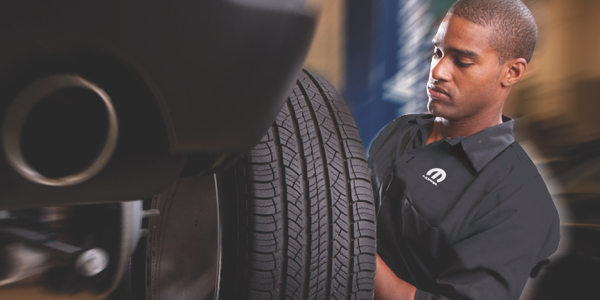Drive with Confidence: GMC Tires Service at Morris Tires
Drive with Confidence: GMC Tires Service at Morris Tires
Blog Article
Tire Service: The Impact of Weather
When it comes to ensuring optimal performance and safety on the roadway, recognizing the effect of climate problems on tire solution is important. GMC Tire Service. In this discussion, we will certainly explore the complex connection between climate conditions and tire service, shedding light on the relevance of weather-specific tire upkeep methods and factors to consider.
Heat and Tire Performance
When exposed to high temperatures, tires experience adjustments in performance that can dramatically affect vehicle safety and security and handling. The heat created from prolonged driving or hot weather condition problems causes the tire rubber to soften, leading to reduced walk life and boosted wear.

Winter Impacts
Cold weather problems can have a significant impact on tire efficiency and security. In chilly weather condition, tires might likewise shed air stress more rapidly, which can impact handling and gas efficiency.
To reduce the effects of winter on tires, it is crucial to consistently inspect tire stress and inflate them to the manufacturer's advised levels. Utilizing winter months or all-season tires made for cold climate problems can likewise boost grip and hold on icy or snowy roads. Appropriate tire maintenance, including routine assessments for wear and damage, becomes a lot more important throughout chillier months to guarantee optimal performance and safety and security.
Rainy Issues Influence
Tires with worn-out treads are a lot more vulnerable to hydroplaning, where a layer of water constructs up between the tire and the roadway surface area, leading to loss of grip. To battle this, vehicle drivers must regularly inspect their tires for appropriate walk depth and consider investing in tires particularly created for wet problems.
Furthermore, stormy weather condition can also decrease presence, making it challenging for motorists to see the road in advance plainly (GMC Tire Service). In such conditions, it is important to change driving rates accordingly and preserve a secure following distance to permit abrupt quits. Correctly filled with air tires can also assist in preserving control on wet roadways by offering much better handling and hold
Snow and Tire Safety
When driving in snowy problems, having the right tires can make a significant distinction in safety and performance. Wintertime tires are made with unique rubber substances and walk patterns to give far better grip on snow and ice compared to all-season tires.

It is vital to comply with producer instructions when setting have a peek at these guys up and making use of tire chains to stop damage to the tires and vehicle. By selecting the appropriate tires, preserving correct inflation, and taking into consideration extra grip aids like tire chains, vehicle drivers can boost their security when navigating snow-covered roadways.
Weather-Related Tire Maintenance
When confronted with numerous weather, correct tire upkeep becomes a vital element of automobile safety and security and performance. Weather-related tire upkeep incorporates a series of methods focused on ensuring optimal tire function and longevity in various weather scenarios. One essential facet of weather-related tire upkeep is tire stress regulation. Varying temperature levels can trigger tire stress to differ, influencing traction and fuel efficiency. Regularly readjusting and checking tire pressure according to producer suggestions is crucial for safe driving in changing climate condition. In addition, tire tread deepness plays a considerable duty in handling different weather condition elements. Tires with adequate tread depth supply much better hold on damp or icy roads, reducing the danger of hydroplaning or skidding. When step wear gets to a certain depth is crucial for preserving grip and stability in damaging weather condition, evaluating tire step on a regular basis and replacing tires. By focusing on weather-related tire upkeep, chauffeurs can boost safety, boost lorry efficiency, and prolong the life expectancy of their tires.
Final Thought
Finally, climate condition have a significant effect on tire efficiency and security. From warmth impacting tire pressure and wear to winter minimizing traction, it is important to think about the my review here weather condition when keeping and additional resources utilizing tires. Stormy conditions can reduce grip and lead to hydroplaning, while snow can raise the danger of crashes if tires are not correctly outfitted. Weather-related tire upkeep is vital in making certain optimum efficiency and safety and security when traveling.
In this conversation, we will certainly explore the elaborate connection between weather problems and tire solution, shedding light on the value of weather-specific tire upkeep techniques and considerations.

Report this page